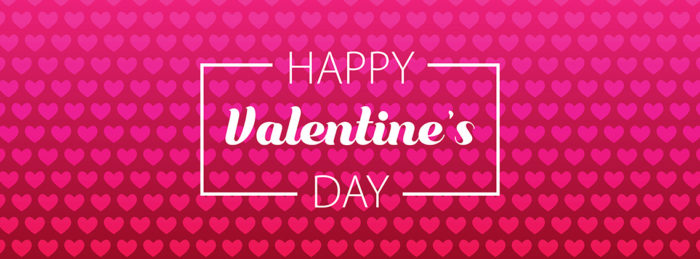Cupid is drawing back his bow…Valentine’s Day is the first of the year’s major gifting events in the marketer’s diary. The world over, couples are getting set to declare love and passion by spending money. Again. Last year, consumers in the States showered their loved ones with $18.2billion worth of gifts (according to US National Retail Federation research) – half of them buying sweets and confectionery, a quarter splashing out on jewellery. On February 14, 2017 across the Atlantic, more than $2bn was spent just on flowers.
The festival is at least as old as the ancient Romans, although some claim it hails from even further back when it was a rather racy fertility rite by pagan priests romping about the countryside in thongs, flogging virgins – a scene which morphed in the 5th century into a less frantic and more romantic event, with Pope Gelasius giving it Christian status to clean it up a bit.
The oldest known valentine – which is stored in the British Library – is a poem written in 1415 by Charles, Duke of Orleans, to his wife while he was imprisoned in the Tower of London, after the English vanquished the French at the Battle of Agincourt:
Je suis desja d’amour tanné, Ma tres doulce Valentinée…
(I am already sick of love, My very gentle Valentine)
Spurred into action when he returned from a sales trip with more than $5,000 worth of orders for her cards, Howland started hiring friends for her new business in Worcester, Massachusetts. Her fame and her business grew and, when she sold the company in 1881 at the age of 53, it was grossing more than $100,000 a year.
From cards to experiences
By the 1900s, it had become commonplace to send a printed card. Although card-giving is on the decline generally (47 per cent send cards, compared with 63 per cent a decade ago), an average one billion Valentine’s cards are exchanged annually. At Christmas, 2.6bn are sent (according to the Greeting Card Association), making Valentine’s Day the second most popular card-sending holiday after Christmas.
For some people, of course, sending a card isn’t enough – they want candlelit dinners, a show or concert or more – 2017 National Retail Federation figures revealed that nearly a quarter of consumers polled planned to give the gift of an experience for Valentine’s Day – a figure that climbs higher among millennials, reaching nearly 46 per cent among 18-24-year-olds.
In a flash NRF poll conducted Stateside by ORC International, 92 per cent of consumers said they were willing to spend an extra $10 on Valentine’s Day; half of them taking advantage of a good promotion and more than a third being tempted to spend a little more if they found the perfect gift. So retailers such as Target, Macy’s and Nordstrom – that offer gift guides and recommendations – generally do well.
Some consumers push the boat out and style it up with extra-special trips out, spas days or weekend getaways – such as a Harry Potter-esque three-course, candle-lit dinner for two in Hogwart’s Great Hall – about £500 per couple – courtesy of Warner Bros Studio Tour in London, which sold out before Christmas!
Or perhaps they will fancy a Romeo and Juliet-style few days in Italy, where the more energetic can join around 10,000 runners to take part in the Verona In Love Half Marathon event or the Duo relay race, which is primarily for engaged couples.
Maybe something less rigorous and west of the Atlantic is preferable – the Great San Francisco Pillow Fight! In the past, approximately 1,000 people have shown up at Justin Herman Plaza on Market Street, busting their pillows and releasing feathers everywhere when the clock strikes 6pm . . . it’s a good work-out for the upper arms, apparently.
But if a ‘cerebral’ stroll is more your thing, last year there was an in-app Pokémon Go Valentine’s Day event piquing the interest of thousands of gamers all around the world.
Valentines data and successful campaigns
Event marketers are clearly working hard to attract and engage with consumers. Campaigns of recent years range from sweet to simple to more daring, with varying degrees of success.
How sweet it is?
So, wearing your consumer hat for a moment, you may agree with American comedian Jay Leno, who said archly: “Today is Valentine’s Day. Or, as men like to call it, Extortion Day.”
Or you may think Elizabethan poet Christopher Marlowe offered a softer view: “Money can’t buy love, but it improves your bargaining position.”
But maybe it was cartoonist Charles M Schulz whose summary placed here to mark this Valentine’s Day is perhaps the best for events marketers, who are simply aiming to get their message across well, and at the right time: “All you need is love. But a little chocolate now and then doesn’t hurt.”
Have an opinion on this article? Please join in the discussion: the GMA is a community of data driven marketers and YOUR opinion counts.
